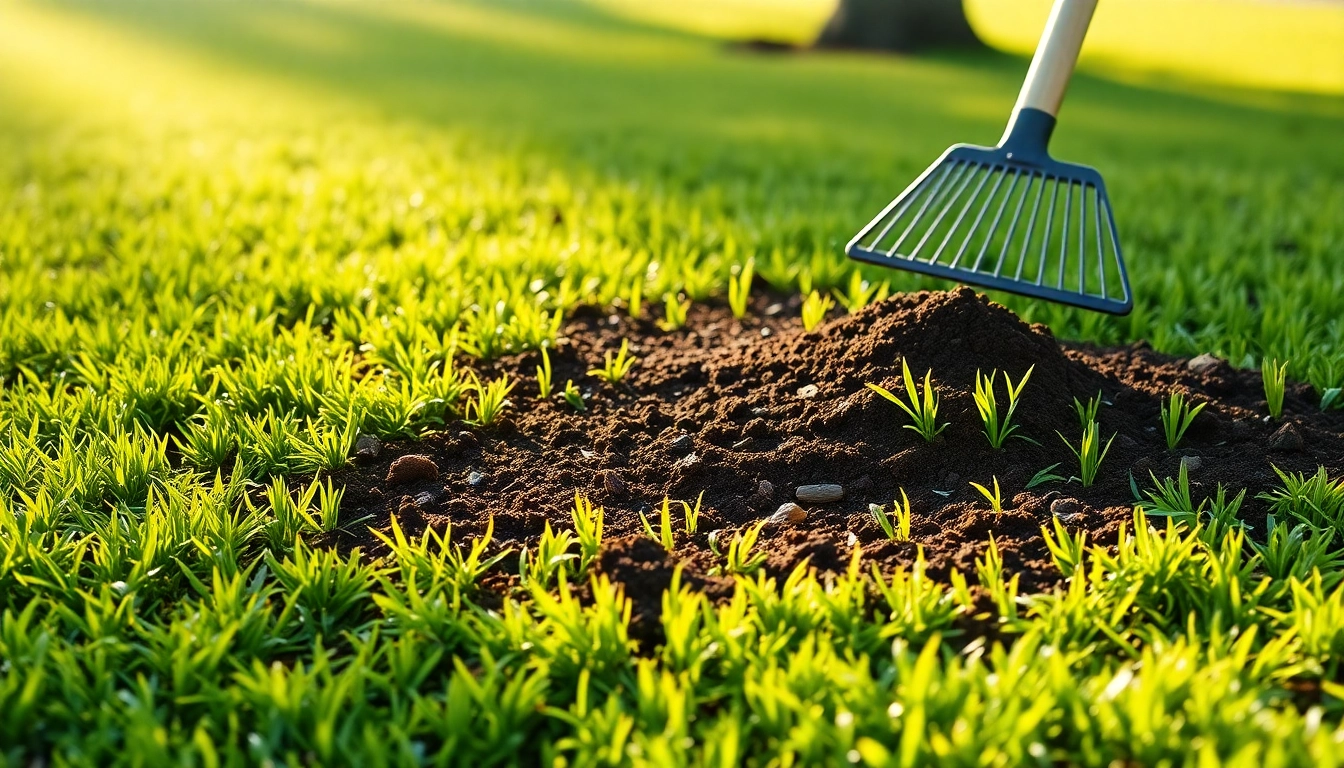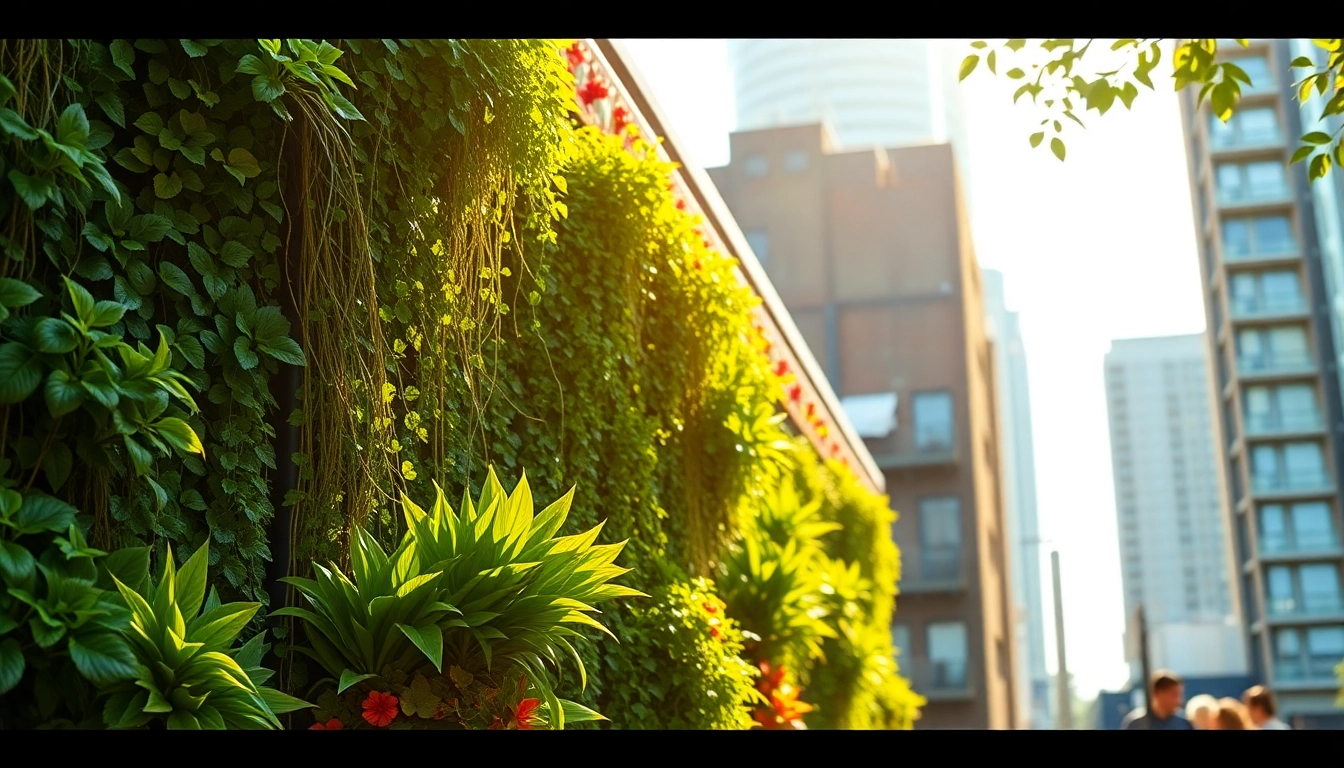Understanding Lawn Top Dressing
What is Lawn Top Dressing?
Lawn top dressing is a horticultural technique involving the application of a thin layer of material, typically a nutrient-rich compost or soil mix, directly onto the surface of a lawn. This practice aims to improve the overall health and appearance of your grass by enriching the soil and correcting common lawn issues such as unevenness and thatch buildup. It serves as a vital step in maintaining lush, green turf and is favored for its simplicity and effectiveness.
Essentially, top dressing replenishes soil quality, enhances drainage, and aids in the growth of a thicker, more resilient lawn. Through the addition of organic matter, top dressing promotes microbial activity that can further enrich the lawn’s ecosystem, ultimately contributing to its vitality. If you’re seeking to enhance your lawn’s health, lawn top dressing is a recommended practice that should not be overlooked.
Benefits of Lawn Top Dressing
Top dressing offers numerous advantages for lawn care enthusiasts. Here are some of the most significant benefits:
- Improves Soil Quality: Regular top dressing introduces organic material into the soil, enhancing its nutrient profile and structure.
- Promotes Thicker Growth: By adding rich compost or soil to the lawn, top dressing encourages grass seedlings and rhizomes to thrive, resulting in a denser and more robust turf.
- Repairs Damage: Top dressing can effectively fill in low spots and repair areas affected by wear and tear, pests, or disease.
- Enhances Drainage: A well-blended top dressing mix can improve water infiltration and drainage, which is crucial for healthy grass roots.
- Weeds Control: Applying organic matter can suppress weed growth by creating a thicker lawn that leaves less room for weeds to establish.
- Encourages Microbial Activity: The addition of organic materials leads to increased microbial activity in the soil, further improving its health and fertility.
Common Materials for Top Dressing
The choice of materials used for top dressing significantly affects the outcome of the treatment. Here are some commonly used top dressing materials:
- Compost: Nutrient-rich, finished compost is the most popular choice as it enriches the soil with organic matter and essential nutrients.
- Sand: Used primarily to improve drainage and soil structure, especially in clay-heavy soils.
- Topsoil: Quality topsoil can be incorporated into the mix to provide a nutrient base and encourage healthy grass growth.
- Peat Moss: Helps retain moisture and prevent soil compaction, particularly beneficial for sandy soils.
- Mulch: Organic mulch can be used as a top dressing to suppress weeds and retain soil moisture.
When to Top Dress Your Lawn
Identifying the Right Timing
Timing is crucial when it comes to effective lawn top dressing. The ideal time to perform this task largely depends on your geographic location and the type of grass in your lawn. Here are some guidelines:
- Spring: Early spring is often recommended for cool-season grasses, as this is when they begin their active growing phase.
- Fall: For warm-season grasses, late summer to early fall is the ideal time, allowing the grass to recover and grow before winter.
Seasonal Considerations for Lawn Top Dressing
Each season presents unique challenges and benefits:
- Spring: This is a time of rejuvenation for grass, making it an excellent time for top dressing to promote vigorous growth.
- Summer: If the lawn is experiencing heat stress, light top dressing can help retain moisture but should be done carefully to avoid fungal issues.
- Autumn: Fall top dressing is beneficial for warm-season grasses as it prepares them for the winter frost.
- Winter: Avoid top dressing during winter as grass growth is minimal, and the added material can suffocate the grass.
Signs Your Lawn Needs Top Dressing
There are several indicators that your lawn could benefit from top dressing, including:
- Visible uneven patches in the lawn.
- Soil compaction or poor drainage issues.
- Thinning grass or bare patches.
- Excess thatch buildup inhibiting growth.
- Weak or slow grass growth despite adequate watering and care.
How to Top Dress Your Lawn Effectively
Preparation Steps Before Top Dressing
To ensure successful top dressing, follow these preparation steps:
- Mow the Lawn: Begin by mowing the grass on the lower setting to allow for better soil contact.
- Rake the Lawn: Rake up any debris, leaves, or particles that may obstruct the top dressing material.
- Water the Lawn: Lightly water the grass a day before top dressing; this will help the soil hold the moisture needed for the new material.
Step-by-Step Application Guide
Here’s a straightforward approach to top dressing your lawn:
- Select Your Material: Choose your top dressing material based on your lawn’s needs.
- Apply the Top Dressing: Using a shovel or a top dressing spreader, apply a thin layer of the chosen material—ideally about ¼ to ½ inch thick. Be careful not to smother the grass.
- Leveling: After spreading, use a rake to distribute the material evenly, ensuring grass blades remain visible.
- Water Again: Lightly water the freshly top-dressed lawn to help the soil settle and activate microbial activity.
Tools and Equipment for Lawn Top Dressing
Having the right tools will make the top dressing process more efficient:
- Top Dressing Spreader: A mechanical spreader ensures even application of the material.
- Broad Rake: A rake is useful for leveling the top dressing material and ensuring even coverage.
- Shovel or Scoop: For transporting and moving the material to the spreading area.
- Water Hose: For light watering before and after the application of top dressing.
Choosing the Right Mix for Lawn Top Dressing
Top Dressing Soil Mixes Explained
Creating an optimal top dressing mix is crucial for enhancing your lawn’s health. The ideal mix typically includes:
- Sandy Loam: Comprising three parts sharp sand, six parts loamy topsoil, and one part compost, this blend offers excellent drainage.
- Compost-Heavy Mix: Higher compost content allows for maximum nutrient benefit, ideal for revitalizing tired or poor soils.
Customizing Your Lawn Top Dressing Mix
You can customize your top dressing mix based on specific lawn conditions:
If your lawn suffers from poor drainage, consider adding more sand. Conversely, if nutrient deficiency is your primary concern, increase the proportion of compost.
Where to Source Quality Top Dressing Supplies
Your local garden center, landscape supply stores, or bulk soil suppliers are great places to find top dressing materials. Ensure you choose high-quality organic compost and other materials to get the most out of your top dressing efforts.
Maintaining Your Lawn After Top Dressing
Watering and Care Post Top Dressing
After top dressing, it’s vital to maintain your lawn correctly for best results:
- Regular Watering: Keep the lawn adequately hydrated, especially in the weeks following top dressing.
- Limit Foot Traffic: Restrict heavy foot traffic immediately post-treatment to allow the grass to recover.
Evaluating Results: How to Measure Improvements
A few weeks after top dressing, evaluate your lawn’s condition by checking:
- Improved grass density.
- Increased vibrancy in color.
- Filling in of any bare or uneven spots.
Long-Term Lawn Care Strategies
Incorporating lawn top dressing into your annual maintenance routine can lead to long-term improvements. Consider the following strategies:
- Annual Top Dressing: Implement a yearly top dressing regimen to consistently refresh your lawn’s soil.
- Complementary Practices: Combine top dressing with practices like aeration and overseeding for comprehensive lawn health.
- Regular Testing: Conduct soil tests every couple of years to monitor pH levels and nutrient profiles, adjusting your top dressing mix as necessary.



